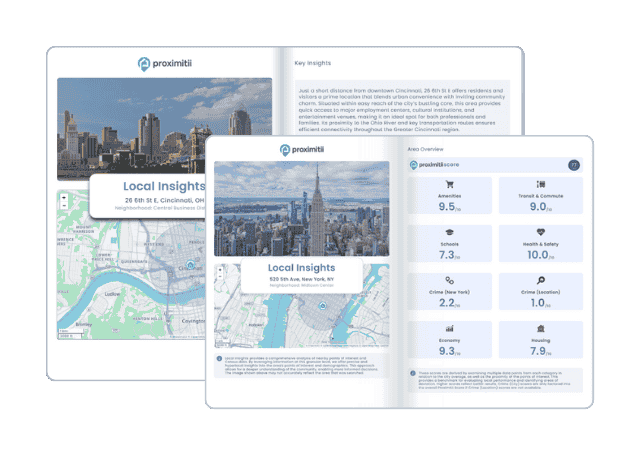| Statistic | Reportedincidents | /100k people | Aurora/100k people | Ohio/100k people | National/100k people |
| Total crime | 128 | n/a (estimate) | 725 | 1,979 | 2,281 |
| Murder | 0 | n/a | 0.0 | 5.4 | 5.7 |
| Rape | 0 | n/a | 0.0 | 47.0 | 38.0 |
| Robbery | 1 | n/a | 5.7 | 49.7 | 66.5 |
| Assault | 6 | n/a | 34.0 | 184.4 | 264.1 |
| Violent crime | 7 | n/a (estimate) | 40 | 287 | 364 |
| Burglary | 2 | n/a | 11.3 | 233.5 | 250.7 |
| Theft | 117 | n/a | 662.4 | 1,189.6 | 1,347.2 |
| Vehicle theft | 2 | n/a | 11.3 | 269.4 | 318.7 |
| Property crime | 121 | n/a (estimate) | 685 | 1,693 | 1,917 |


Crime is typically categorized into two main types: violent and property crimes. Violent crimes encompass offenses such as murder, rape, robbery, and assault, while property crimes include burglary, theft, and vehicle theft. Based on the most recent report, the Aurora crime rate is lower than the national average by 74.2%. Specifically, there were 6 violent crimes in Aurora, equivalent to 34 per 100,000 individuals, lower than the national average by 90.7%. Furthermore, Aurora recorded 99 property crimes, amounting to 566 per 100,000 residents, which was lower than the average by 71%.
Aurora proudly maintains an impressively low crime rate, registering at a mere 600, which sharply contrasts with the national average of 2324. This stark contrast firmly positions Aurora as one of the most secure residential destinations throughout the entire United States. The total crime rate takes into account the total occurrences of both violent and property crimes per 100,000 people, offering an invaluable assessment of the area's safety suitability for living.
Aurora stands out with one of the lowest violent crime rates in the United States. Reporting only 34 violent crimes per 100,000 people, Aurora secures its place among the safest cities in the nation, making it an enticing destination for those in search of a new home.
In the most recently reported crime year, Aurora registered zero reported homicides. This statistic not only designates the area as an exemplar of security but also emanates a profound sense of safety within its community. A minimal incidence of severe violent crime not only fosters a strong sense of well-being among residents but also sets a commendable standard for other regions aiming to cultivate similarly safe surroundings.
Property crime rates per 100,000 individuals have exhibited a consistent decrease of about 50% since 1990, with a minor upturn observed in recent years. According to the latest crime data, Aurora maintains a property crime rate of 566 incidents per 100,000 people, significantly below the national average of 1954. This serves as a strong indication of the status of Aurora as a secure and desirable place to reside, emphasizing its commitment to safety and well-being within the community.
AreaVibes has conducted polls asking local residents if they feel safe living in Aurora. Based on the results of the surveys (6 responses), 100% of people felt that there was very little crime in Aurora and felt safe walking alone at night. While 0% of people felt that it was not a safe place to live and did not feel safe walking alone at night.
Determining whether Aurora is a place to live may not always yield a simple answer, given the city's varying safety levels across different areas. Nonetheless, comprehending the city's overall crime rate can be a valuable asset. In broad terms, Aurora has an overall crime rate that is 74% lower than the national average. When we take a look at crime on a daily basis, this translates into 0.29 daily occurrences, comprising 0.02 violent crimes and 0.27 property crimes. Scrutinizing these statistics provides a foundation for a more informed assessment of the suitability of Aurora as a potential place to establish residency.
Year-over-year crime data allows us to analyze short-term trends in crime activity. By comparing crime rates from one year to the next, we can identify patterns and shifts in Aurora crime rates. This information can be invaluable for residents looking to make informed decisions on where to live. When comparing the most recent year to the previous year, total crime in Aurora has decreased by 16% year over year. Violent crime has increased by 20% and property crime has decreased by 17.5%.
If employment opportunities are limited or if many jobs offer low wages, it can lead to higher rates of unemployment and underemployment, which could lead to an increase in Aurora crime rates. Areas where individuals struggle with unemployment or low wages, may be more susceptible to an increase in criminal activities as a result of financial insecurity. While lower rates of unemployment or a surplus of job opportunities could lead to a decrease in crime as their basic needs are being met. Aurora has an unemployment rate of 4%, compared to a national average of 4.7%.
In Aurora, the cost of living is 8.3% higher than the national average. A high cost of living can induce economic stress for locals, especially those with limited financial resources. When people grapple with soaring housing expenses, utility bills, healthcare costs, and other essential necessities, they may be driven towards criminal activities, including theft or fraud, as a means of financial survival. Conversely, cities boasting a lower cost of living may mitigate economic pressures and potentially result in reduced crime rates.
The effectiveness of law enforcement and community policing initiatives can influence crime rates. A strong and collaborative relationship between the police and the community can deter criminal activity and improve safety. In Aurora, there are 2.18 police officers and civilians per 1,000 residents, compared to the national average of 3.25. The effectiveness of law enforcement often depends on community policing strategies that emphasize building trust and cooperation between the police and the community. It's not just about the number of officers but also how they engage with the community.

Why stop at city-to-city? With Local Insights, you can compare neighborhoods, zip codes, or even exact addresses. Access 300+ hyperlocal data points—from schools and crime to housing and amenities—to see which area is the better fit.

| Item | Aurora | Ohio | National |
| Law enforcement employees (officers & civilians) | 34 | 17,044 | 558,732 |
| Police officers & civilians /1000 residents | 2.2 | 2.7 | 3.3 |
| State | Total offenders | Ohio /100K | National /100K |
| Ohio | 17,872 | 156 | 266 |
| City | Population | Violent crime/100k people | Property crime/100k people | Total crime/100k people |
| Boston Heights, OH | 1,194 | 40 | 237 | 278 |
| Valley View, OH | 2,075 | 45 | 265 | 310 |
| Walton Hills, OH | 2,221 | 45 | 265 | 310 |
| Silver Lake, OH | 2,496 | 45 | 265 | 310 |
| Garrettsville, OH | 2,497 | 41 | 284 | 325 |
| Munroe Falls, OH | 5,069 | 40 | 321 | 361 |
| Chagrin Falls, OH | 3,935 | 54 | 322 | 377 |
| Aurora, OH | 16,165 | 40 | 685 | 725 |
| City | Population | Violent crime/100k people | Property crime/100k people | Total crime/100k people |
| Kaukauna, WI | 16,165 | 103 | 777 | 880 |
| Waxhaw, NC | 16,165 | 60 | 486 | 545 |
| Murraysville, NC | 16,174 | 299 | 1,578 | 1,876 |
| Los Osos, CA | 16,174 | 345 | 1,580 | 1,925 |
| Kings Park, NY | 16,153 | 192 | 888 | 1,080 |
| Aurora, OH | 16,165 | 40 | 685 | 725 |